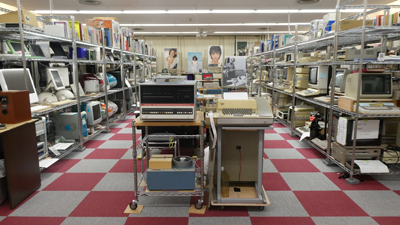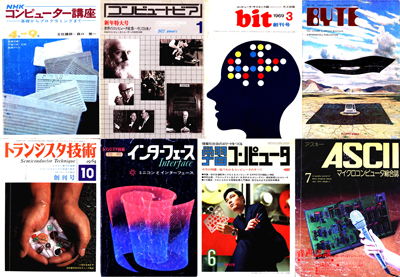

- Home >
- Satellite Museums >
- 2022 >
- Microcomputer Museum and Dream Library, Science and Technology Inheritance Foundation
Microcomputer Museum and Dream Library, Science and Technology Inheritance Foundation


| Location | 2F Kanei Building, 2-16-5 Higashi Ome, Ome, Tokyo 198-0042 (Scheduled to move to Ome City, Tokyo in the winter of 2023.) |
|---|---|
| Visitor information | Open to the public☆1 |
| Contact | Science and Technology Inheritance Foundation Tel: +81-50-6865-3870 Microcomputer Museum / Dream Library: https://scitech.or.jp/museum Official Facebook: https://www.facebook.com/MicomMuseum Official X (formerly Twitter): https://twitter.com/dream_library_ |
☆1 The Microcomputer Museum and the Dream Library can be used at the same time. Need to register as a member and make a reservation. For information on how to use them and the latest information, please refer to the museum's Web site. Membership fee for one year: 3,000 yen (including 1-day pass: 1,000 yen) Members may be accompanied by visitors (1-day passes are required) 1-day pass: 1000 yen for adults and university students, 500 yen for junior high school and high school students. Free of charge for elementary school students; however, they must be 4th graders and older and accompanied by a parent or guardian. Members of the Information Processing Society of Japan: 1-day pass: 500 yen (for adults and university students)
The Microcomputer Museum is a private computer museum open to the public, which is rare in Japan. The museum has a membership system, so visitors can join through the website. Although the museum is named "Microcomputer Museum," it exhibits not only 8-bit microcomputers in the 1970s, but also personal computers ranging from abacuses and slide rules to mechanical computers, vacuum-tube analog computers, mini-computers, and workstations. The exhibition focuses on the epoch-making computers and software that created the era, as well as related materials. The exhibits at the Microcomputer Museum are arranged in chronological order of each product's release. This allows visitors to learn about the dramatic evolution of information technology and the strategies of computer manufacturers from the actual products, just as if they were looking at a chronological table. The Dream Library is a private library specializing in technical magazines, holding 30,000 technical magazines spanning 100 years. The genres of magazines in the collection include science and technology, radio, electronics, computers, models and crafts, ships, trains, aviation and space, manga and animation, science fiction and movies, education and learning, lifestyle (newspapers and others), military-related magazines, etc. The Microcomputer Museum and the Dream Library are operated by the Science and Technology Inheritance Foundation as a cooperative facility, mainly exhibiting equipment and materials collected by Takeshi Yoshizaki, the editor-in-chief of ASCII Magazine in the 1970s, over a 50-year period. The museum and the library continue to accept donations of computers, software, related materials, magazines, and books.
